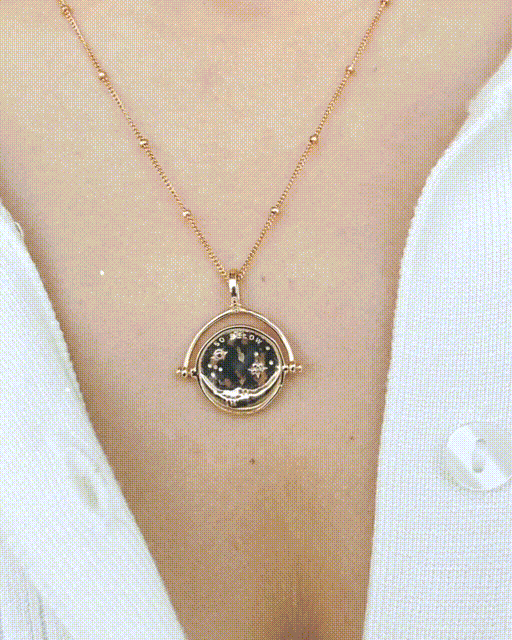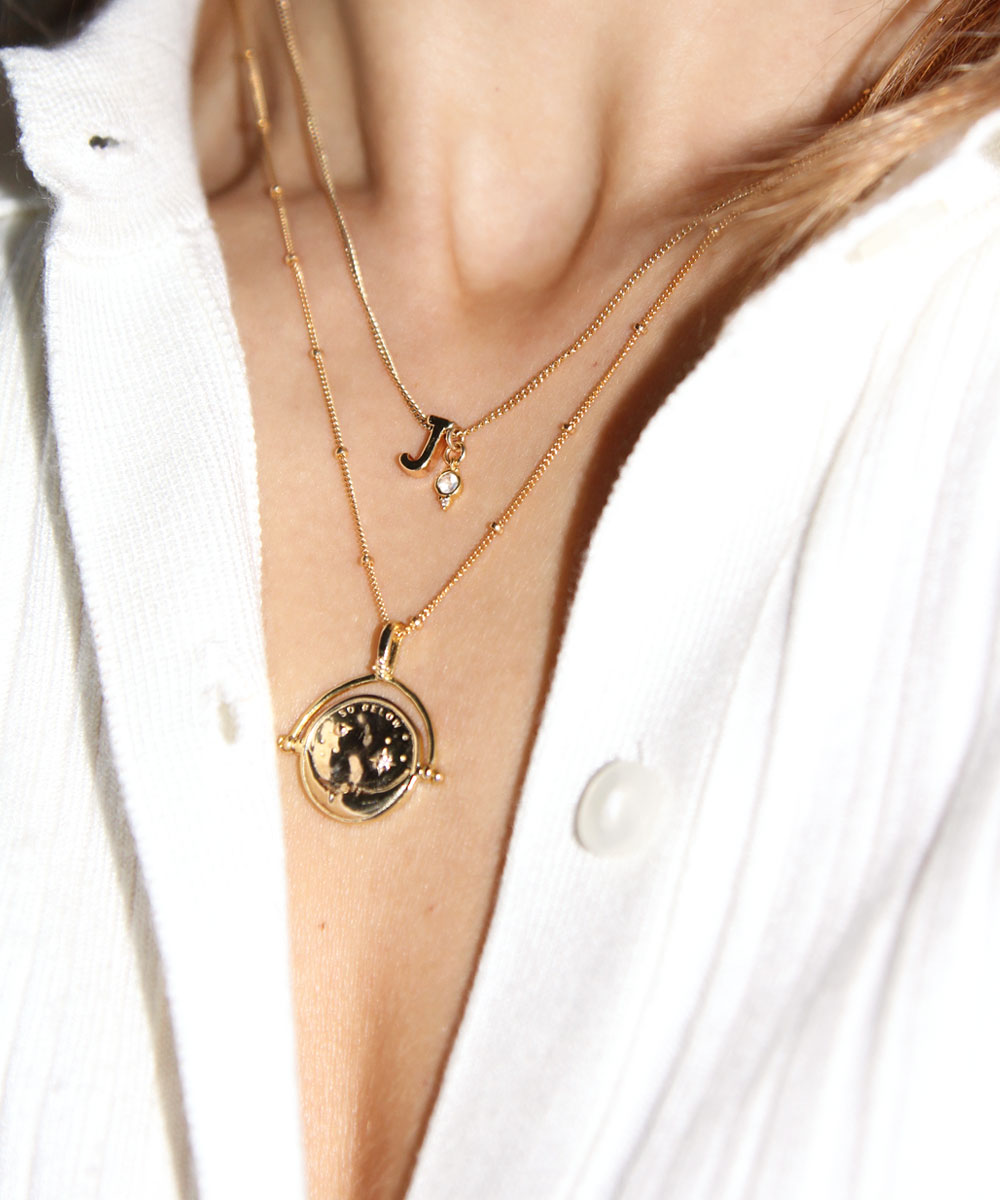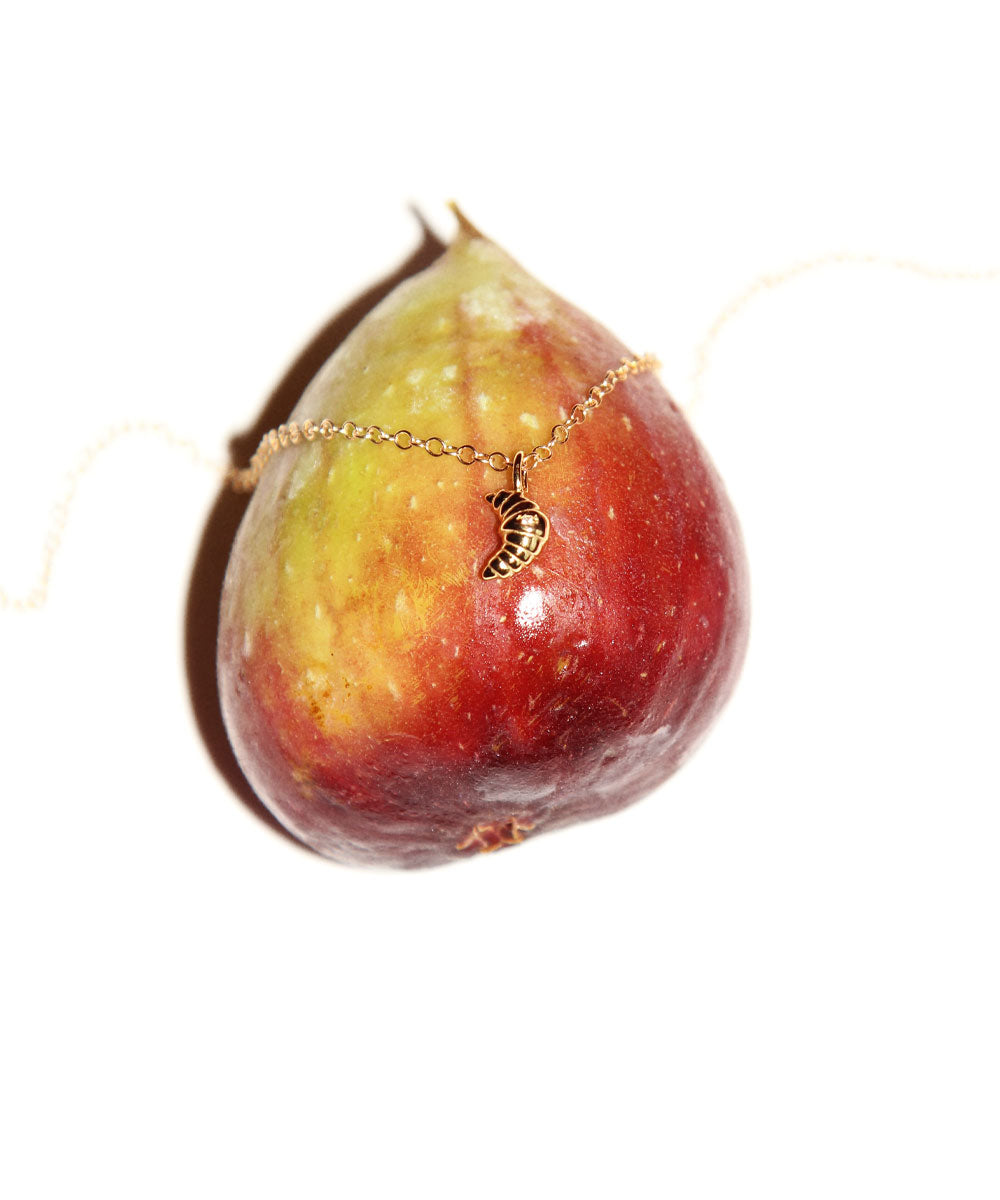What is gold filled jewellery?
I’ll cut straight to the chase. Gold filled jewellery is the closest you’ll find to the quality, durability and beauty of solid gold jewellery, without the price tag. Then comes gold vermeil (more on that later), and finally gold plated.
Gold filled materials are made by heat and pressure bonding 5% (or 3 microns) of gold to brass sheeting or wire, giving it a super thick coating of gold that is highly resistant to tarnishing, scratching, or rubbing off.
Thanks to the heat pressure bonding technique and the 5% gold component, gold filled jewellery is tarnish resistant, skin friendly, and relatively shower safe. But keep in mind that it may still discolour or tarnish if it isn’t cared for properly, and too much water, sweat, wear and tear can reduce the lifespan of your piece. The only thing guaranteed to last is solid gold, and it’s priced accordingly!

Maison de Femmes Evil Eye Talisman gold filled necklace.
How do I know if my jewellery is gold filled?
Legally, gold filled items must be advertised as such. It’s illegal to refer to your products as ‘gold’ when they’re really gold filled, as it’s misleading AF.
Because it needs to be 5% gold to be classified as gold filled, the stamp on your jewellery will read the karatage used along with ‘20’, referring to the fraction 1/20 (or 5%). So a 14kt gold filled piece will read 14/20. An 18kt gold filled piece will read 18/20. You get the gist.
You’ll also find some pieces stamped 14K GF or 18K GF, which is nice and clear.
The gold spectrum
Gold is an interesting material. When solid (24 karat), it’s far too soft to be used for jewellery. To get around this (and to make solid gold jewellery more affordable, durable, or to change the colour) pure gold is mixed—or alloyed—with other metals.
As 100% solid gold is expressed as 24 karats, the karatage of gold refers to how much of the metal (out of 24) is pure gold. For example, 18 karat gold is 18 parts pure gold, 6 parts another metal.
24 Karat: 100% solid gold. 24/24 karats are gold.
22 Karat: 91.7% gold. 22/24 karats are gold.
18 Karat: 75% gold. 18/24 karats are gold.
14 Karat: 58.3% gold. 14/24 karats are gold.
12 Karat: 50% gold. 12/24 karats are gold.
10 Karat: 41.7% gold. 10/24 karats are gold.
14K/20 or 18K/20 Gold Filled: 5% gold or around 2.5-3 microns.
Gold Vermeil: 2.5 microns of gold.
Gold Plated: 0.05% gold.
As you can see, the amount of gold you’re actually getting in your fine jewellery differs depending on the process used, and this can affect how long it lasts and how much you pay.
Gold Filled jewellery vs Gold Plated jewellery
What is Gold Plated?
Gold plated jewellery is typically a very thin layer of gold (0.05% or 1 micron or less), electroplated to a base metal such as brass, copper or nickel. Basically, the jewellery, connected to a cathode bar with a negative charge, is dipped into a plating solution that is positively charge. The negatively charged jewellery then attracts the positively charged ions in the solution, adhering the gold to the metal.
The thickness of the gold plating depends on how long it’s left in the solution, which affects the long term wear and durability of the piece. It’s good for costume jewellery, if you don’t mind that it will fade with regular use.
Gold Filled jewellery vs Gold Vermeil jewellery
What is Gold Vermeil?
Gold Vermeil jewellery is similar to gold filled, except the base metal must be sterling silver. It must have a minimum of 2.5 microns of gold to be considered gold vermeil (rather than gold plated) and it is highly durable and tarnish resistant, just like gold filled. It’s a good option for anyone with known metal allergies who can tolerate gold or silver, as if/when the gold rubs off, they will be exposed to hypoallergenic sterling silver rather than brass.
Please Note: Sterling silver jewellery plated with anything less than 2.5 microns is not gold vermeil, but just plated jewellery, and it will not last.
Which is best?
Honestly, it depends. Personally, I wear a mixture of solid 9kt or 14kt gold, gold vermeil and gold filled every day, because I’m super lazy and hate taking my jewellery off. If you’re looking for every day jewellery that you can wear in the shower, stick to solid gold, gold vermeil and gold filled. Keep in mind that gold vermeil and filled can still tarnish when it’s well-loved and had a lot of water exposure, but it will wear better than plated.
How do I care for gold filled or gold vermeil jewellery?
While the thick layer of gold will last much longer than plated pieces, the harsh reality is that it will never be as durable as solid gold and needs a little extra TLC.
Find out how to clean your jewellery here.











